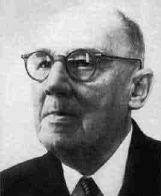

Waclaw Sierpinski attended school in Warsaw, where his talent for mathematics was quickly spotted by his teachers. This was a period of Russian occupation of Poland and it was a difficult time for the gifted Sierpinski to be educated in Poland. Despite the difficulties, Sierpinski entered the Department of Mathematics and Physics of the University of Warsaw in 1899.
In 1903, he won a prize the Department offered for the best essay from a student.
The results in the prize essay that Sierpinski wrote in 1904 were a major contribution to a famous problem on lattice points.
Sierpinski graduated in 1904 and worked for a while as a school teacher of mathematics and physics in a girls school in Warsaw. However when the school
closed because of a strike, Sierpinski decided to go to Krakóv to study for his doctorate. He received his doctorate and was appointed to the University of Lvov in 1908.
When World War I began in 1914, Sierpinski and his family happened to be in Russia. He was interned for a time, and then allowed to go to Moscow. Sierpinski spent the rest of the war years in Moscow working with Luzin. Together they began the study of analytic sets. In
1916, during his time in Moscow, Sierpinski gave the first example of an absolutely normal number. Borel had proved such numbers exit but Sierpinski was the first to give an example.
In 1919, he was promoted to professor at Warsaw, and he spent the rest of his life there.
In 1920, Sierpinski and his former student Mazurkiewicz founded the important mathematics journal Fundamenta Mathematica. Sierpinski edited
the journal, which specialised in papers on set theory.
From this period Sierpinski worked mostly is in the area of set theory but also on point set topology and functions of a real variable. In set theory he made
important contributions to the axiom of choice and to the continuum hypothesis. He studied the Sierpinski curve which describes a closed path which contains
every interior point of a square. The length of the curve is infinity, while the area enclosed by it is 5/12 that of the square. Sierpinski continued to collaborate
with Luzin on investigations of analytic and projective sets. His work on functions of a real variable include results on functional series, differentiability of
functions and Baire's classification.
Sierpinski was also highly involved with the development of mathematics in Poland. He had been honoured with election to the Polish Academy in 1921 and
he was made dean of the faculty at the University of Warsaw in the same year. In 1928 he became vice-chairman of the Warsaw Scientific Society and, in the
same year was elected chairman of the Polish Mathematical Society.
In 1939 life in Warsaw changed dramatically with the start of World War II. Sierpinski continued working in the "Underground Warsaw University" while
his official job was a clerk in the council offices in Warsaw. His publications continued since he managed to send papers to Italy.
Sierpinski was the author of the incredible number of 724 papers and 50 books. He retired in 1960 as professor at the University of Warsaw, but he continued
to give a seminar on the theory of numbers at the Polish Academy of Sciences up to 1967. He also continued his editorial work, as editor-in-chief of Acta
Arithmetica which he began in 1958, and as an editorial board member of other prestigeous journals.
He received so many honours that it would be impossible to mention them all here. He was awarded honorary degrees from the universities Lvov, St Marks of Lima, Amsterdam, Tarta, Sofia, Prague, Wroclaw, Lucknow, and Lomonosov of Moscow.
He was elected to the Geographic Society of Lima, the Royal Scientific Society of Liège, the Bulgarian Academy of Sciences, the national Academy of Lima, the Royal Society of Sciences of Naples, the Accademia dei Lincei of Rome, the German Academy of
Science, the American Academy of Sciences, the Paris Academy, the Royal Dutch Academy, the Academy of Science of Brussels, the London Mathematical Society, the Romanian Academy, and the Papal Academy of Sciences.